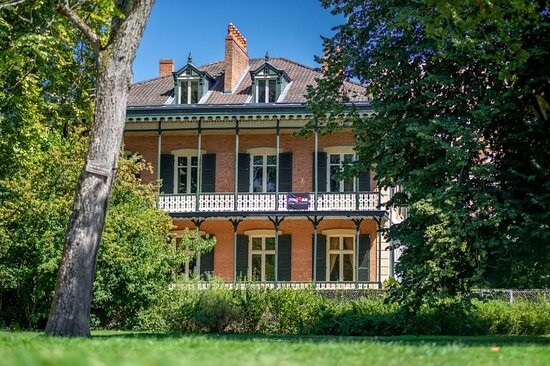After Plombières, Vichy was the other great spa in fashion under the Second Empire. Already in 1799, Laetitia Bonaparte, in the company of her son, Louis, took the waters of this spa which was known since Gallo-Roman antiquity. During the First Empire, the “Parc des Sources” (Park of Springs) was layed out on the personal order of the Emperor following the decree of Gumbinen in 1812. In 1813, it was Julie Claire’s turn to take the waters at Vichy.
From 1840 on, the future imperial aristocracy started to visit the spa, but it was Napoleon III who would put the town on the map (assuring its future prosperity) by taking the waters there on five occasions (1861,1862, 1863, 1864 and 1866). For this first visit, the Emperor ordered the construction of a certain number of public buildings destined to promote the expansion of the town (the town hall, the church, the railway station, the casino). These were complimented by other urban planning projects (quays, parks and roads).
The first residence of Napoleon III at Vichy in 1861 was the home of Isaac Strauss, who was directer of the Court Balls given at the Tuileries. It is today an annex of the Aletti Palace Hotel. On the following visits, he settled with his suite in the chalets named after Emperor, that had been built in the meantime along the boulevard bearing his name (today the Boulevard des Etats-Unis) and along the arc Napoléon (Napoleon Park) bordering the Allier. These pavilions are private property and cannot be visited.
Whilst the town hall has disappeared, the casino and the Church of Saint-Louis have been preserved. The first casino, which was inaugurated 2 July 1865, is attributed to Charles Badger who designed an eclectic building whose facade is still decorated with caryatids symbolizing the seasons by Carrier-Belleuse. It was transformed and expanded in 1995 to become the Palais des Congrès-Opéra (Opera Conference Center), and is only accessible to conference participants. The Church Saint-Louis is, however, open everyday. It was inaugurated, like the casino, in 1865, and has written on its tympanum the following inscription: “A Dieu et à Saint-Louis l’Empereur Napoléon III a pris soin de faire édifier à ses frais cette église” [“To God and to Saint-Louis the Emperor Napoleon III took the care to have built at his own expense this church”]. In the apse, a series of stained glass windows evoke the members of the imperial family: Saint-Napoléon, Saint-Louis, Saint-Eugenie, Saint-Hortense, and Saint-Charles and Saint-Eugène, Saint-Jean, Saint-Joseph [Napoléon Eugène Louis Jean Joseph are the given names of the Prince Imperial].
It is interesting to note that a bust of Napoleon III given by the Fondation Napoléon was installed in 1991 in the park bearing his name. It recalls the particular attachment the Emperor had to the city of Vichy. As evidence of this attachment is this citation: Je me plais ici plus que nulle part ailleurs, car cela est ma création [“I am more happy here than anywhere else, for this is my creation”].
Vichy, “La Reine des eaux” [“Queen of the Waters”], listed as a UNESCO World Heritage Site
Since 24 July 2021, the town of Vichy has been inscribed on the UNESCO World Heritage List, following a vote in favour of the nomination at the 44th session of the Intergovernmental World Heritage Committee, which took place in Fuzhou, China. Vichy is one of eleven European spa towns to have submitted a joint application for inclusion on the UNESCO World Heritage List. Known as the “Queen of Waters”, it was the only city to represent France in this joint transnational European request.


